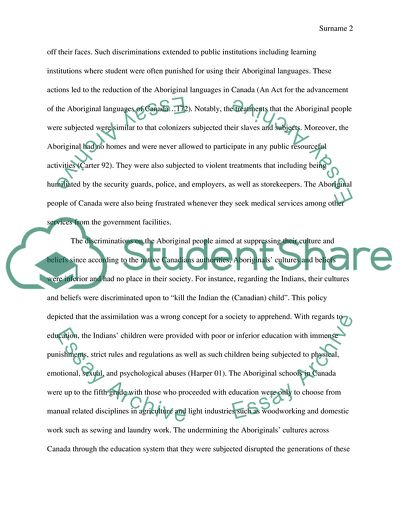Cite this document
(The Legislatures Impacted the Rights of Aboriginal People in Canada Essay Example | Topics and Well Written Essays - 1250 words, n.d.)
The Legislatures Impacted the Rights of Aboriginal People in Canada Essay Example | Topics and Well Written Essays - 1250 words. https://studentshare.org/social-science/1863792-how-have-the-legislatures-impacted-the-rights-of-aboriginal-people-in-canada
The Legislatures Impacted the Rights of Aboriginal People in Canada Essay Example | Topics and Well Written Essays - 1250 words. https://studentshare.org/social-science/1863792-how-have-the-legislatures-impacted-the-rights-of-aboriginal-people-in-canada
(The Legislatures Impacted the Rights of Aboriginal People in Canada Essay Example | Topics and Well Written Essays - 1250 Words)
The Legislatures Impacted the Rights of Aboriginal People in Canada Essay Example | Topics and Well Written Essays - 1250 Words. https://studentshare.org/social-science/1863792-how-have-the-legislatures-impacted-the-rights-of-aboriginal-people-in-canada.
The Legislatures Impacted the Rights of Aboriginal People in Canada Essay Example | Topics and Well Written Essays - 1250 Words. https://studentshare.org/social-science/1863792-how-have-the-legislatures-impacted-the-rights-of-aboriginal-people-in-canada.
“The Legislatures Impacted the Rights of Aboriginal People in Canada Essay Example | Topics and Well Written Essays - 1250 Words”. https://studentshare.org/social-science/1863792-how-have-the-legislatures-impacted-the-rights-of-aboriginal-people-in-canada.


